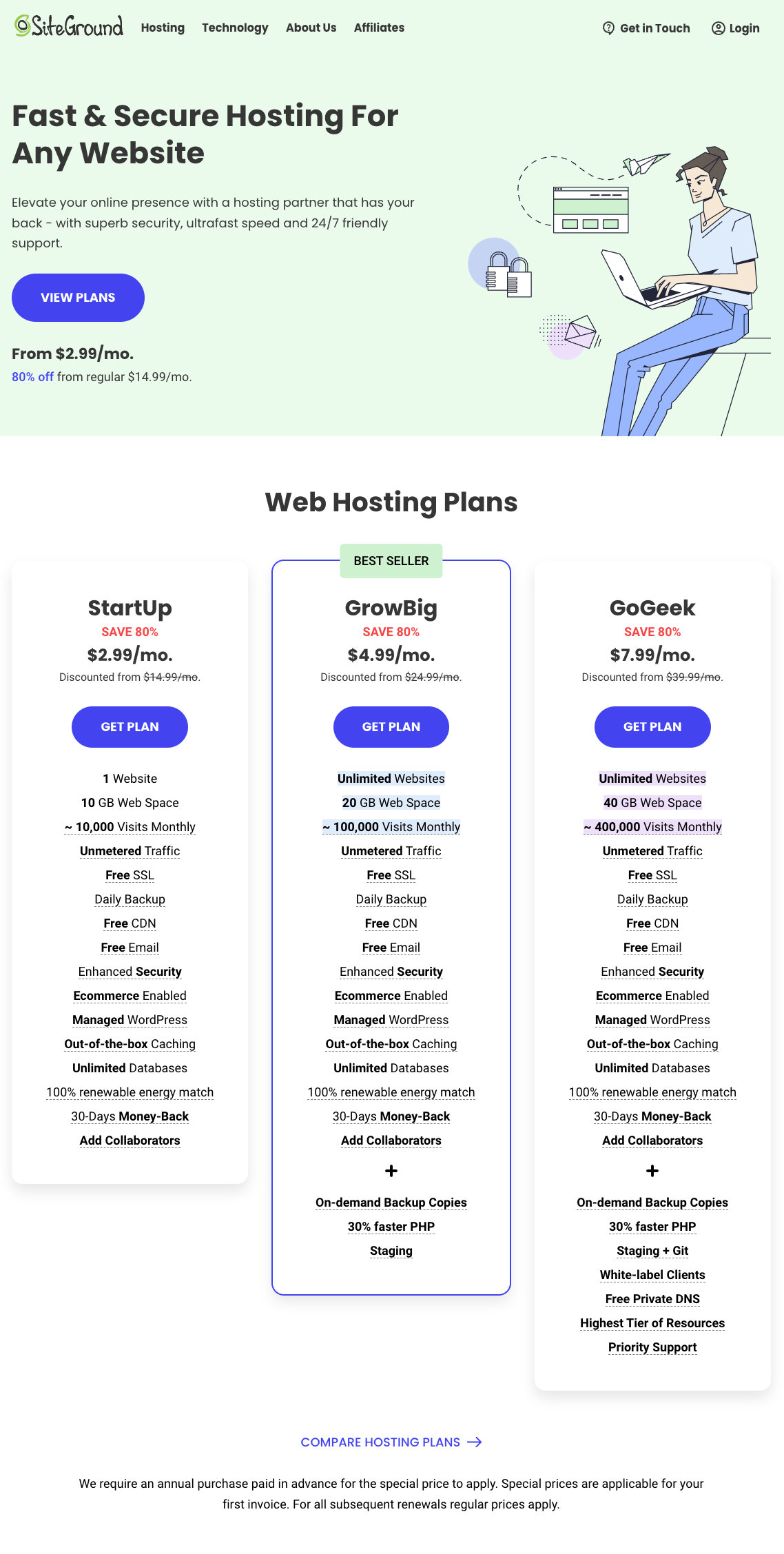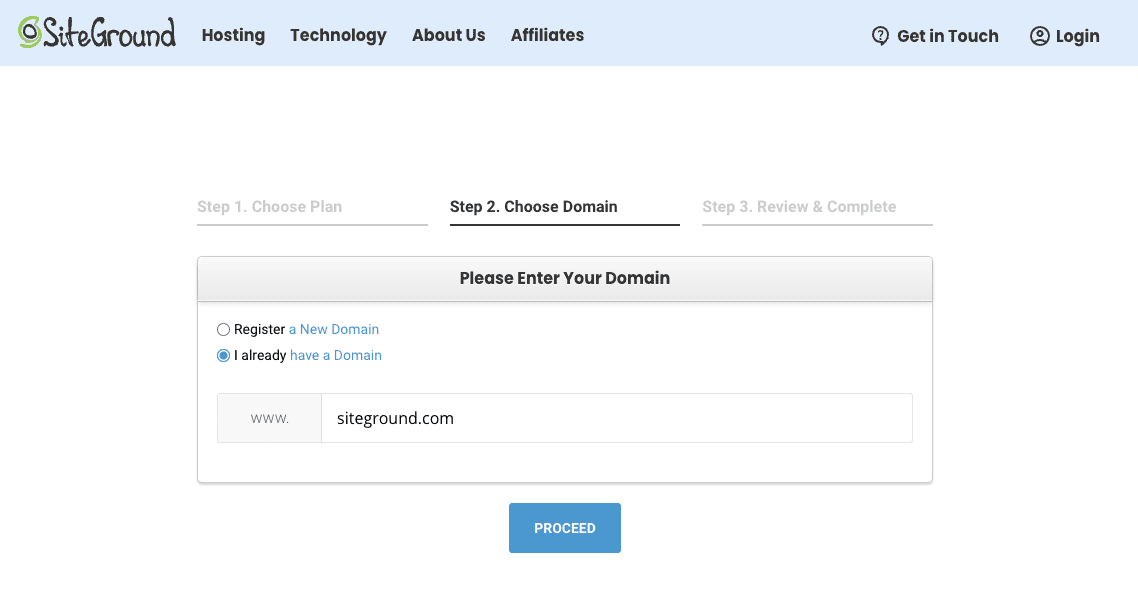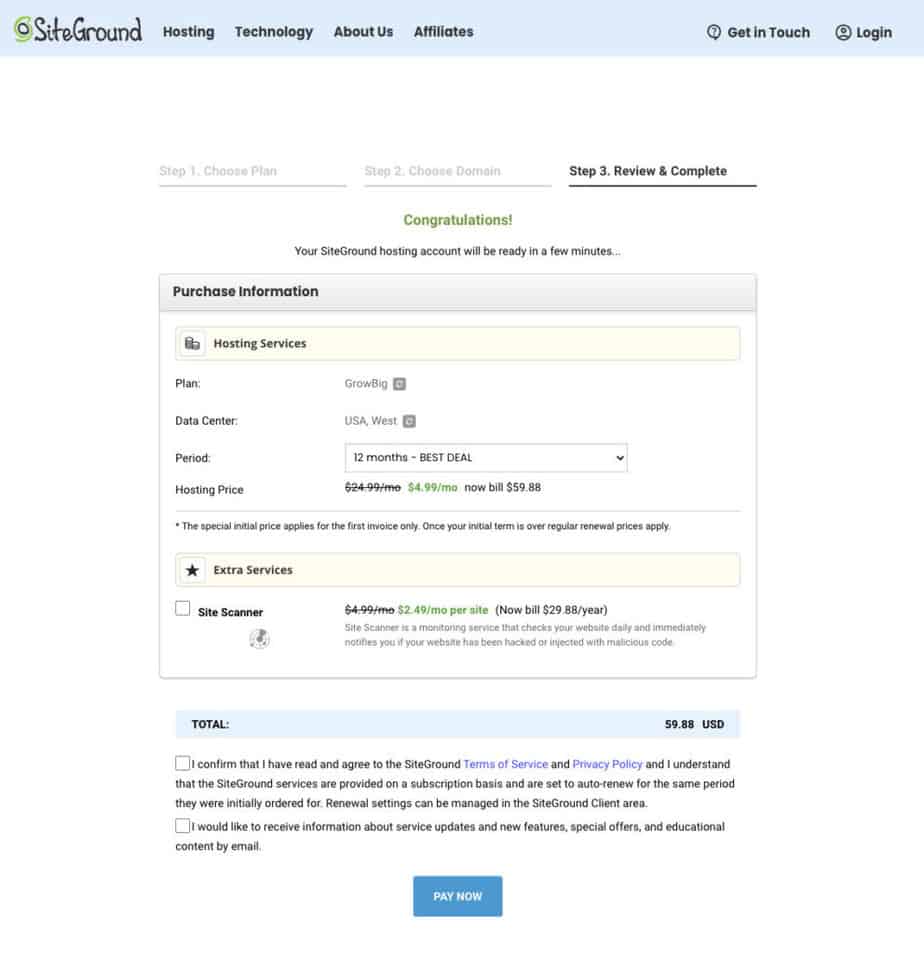How to Start a Blog with SiteGround: A Step-by-Step Guide
Are you interesting in learning how to start a blog? This comprehensive beginners guide will show you how to start a blog from scratch so you can make money blogging in 2023 and beyond!
I’ll show you how to start you own blog in under an hour with Siteground so you can start sharing content and earning money with this simple side hustle!

Starting a blog may seem intimidating, but with Siteground, the process is super simple. Siteground is a popular web hosting provider that offers an array of features ideal for bloggers.
In this article, I’ll guide you on how to start a blog with Siteground in just a few simple steps. By the end of this article, you’ll be ready to kickstart your blogging journey and establish a strong online presence.
First things first, before we dive in, let’s define what a blog is. A blog is an online platform where individuals or businesses can share their thoughts, knowledge, and ideas with the world. It’s a great way to connect with people who share similar interests and passions.
Before we begin, here’s what this article will focus on:
- Why you should start a blog in 2023: There are plenty of great reasons why blogging can be the a great choice for you.
- How to select a great hosting plan that is affordable and easy to use: I’ll show you how to go to Siteground’s website and select a hosting plan that fits your needs and budget. I recommend the StartUp plan if you’re just starting.
- How to choose a domain name for your blog: This is your website’s address, so choose something memorable and easy to spell. Siteground typically offers a free domain name for the first year.
- How to install WordPress using the Siteground’s one-click installation feature: This process is straightforward and takes only a few minutes.
- How to customize your website’s appearance by choosing a blog theme that fits your style and branding.
- How to create engaging content that resonates with your audience and promotes your blog on social media and other online platforms.
That’s it! By following these simple steps, you can start a blog with Siteground and unleash your creative potential.
In the next section, I’ll explore why starting a blog in 2023 is a worthwhile venture.
Why Start a Blog in 2023
Blogging has become a popular form of online expression and communication. In today’s digital age, starting a blog has never been easier, more affordable, or more rewarding. Whether you are looking to share your thoughts, build a community, promote your business, or establish yourself as an authority, there are several compelling reasons why you should start a blog in 2023.
With a blog you can…
Share Your Passion
Blogging allows you to share your passion with the world. Whether you are interested in travel, food, fashion, fitness, or any other subject, blogging gives you a platform to express your ideas and creativity. It can just provide you with an outlet for your thoughts and emotions.
Build Your Brand
If you are an entrepreneur, freelancer, or professional, blogging can help you build your brand and establish yourself as an expert in your field. By sharing your knowledge and expertise, you can gain credibility, attract potential clients or customers, and differentiate yourself from the competition.
Connect with Others
Blogging is a great way to connect with like-minded individuals and build a community. You can engage with your readers through comments, social media, and email, creating a network of supporters and friends. By sharing your experiences and perspectives, you can inspire, educate, and motivate others.
Enhance Your Skills
Blogging can help you enhance your skills in writing, marketing, and communication. By creating content regularly, you can develop your writing abilities and hone your style. Additionally, blogging can help you improve your marketing skills, such as social media promotion, email campaigns, and search engine optimization.
Explore Opportunities to make money
Blogging can open up new opportunities and avenues. You can monetize your blog through advertising, sponsorships, or affiliate marketing. Additionally, you can gain exposure and recognition, which can lead to speaking engagements, collaborations, or job offers.
Overall, starting a blog in 2023 can be a fulfilling and enriching experience. Whether you are looking for personal or professional growth, blogging can help you achieve your goals and make a difference in the world.
Why Siteground is a Great WordPress Host for Bloggers
Choosing a reliable web hosting provider is crucial for the success of your blog. Siteground is an excellent option for bloggers who use WordPress. Let’s explore the reasons why:
- Speed and Performance: Siteground boasts a high level of uptime and fast loading times, which is essential for user experience and search engine optimization.
- Security: Siteground implements top-notch security measures, including regular backups and automatic updates, to ensure your blog is protected from online threats.
- User-Friendly Dashboard: Siteground’s dashboard is intuitive and easy to use, even for beginners. You can manage your website’s settings, install WordPress, and access customer support all in one place.
- Customer Support: Siteground offers customer support through various channels, including phone, live chat, and email.
Additional Features for WordPress Users
Siteground offers unique features specifically designed for WordPress users:
- WordPress Auto-Install: Siteground provides a one-click installation to set up WordPress within minutes.
- Managed WordPress: Siteground’s Managed WordPress service takes care of the technical aspects of running your website, such as updates and backups, allowing you to focus on creating content.
- WordPress Staging: Siteground’s WordPress staging feature enables you to test changes to your website before publishing them live.
Overall, Siteground’s robust features, reliable performance, and excellent customer support make it an ideal web hosting provider for bloggers using WordPress.
How to Set up a New Blog with Siteground
Starting a blog can be an exciting journey, but it can also be overwhelming for beginners. Luckily, Siteground makes it easy for anyone to set up a blog with just a few clicks.
In this section, I’ll guide you through some essential steps to help you get started.
Select a Hosting Package
Use this link to begin the process of starting your blog
Then follow this simple process to set up your blog in a few minutes.

Start by choosing a hosting package. Siteground offers different hosting plans to fit your needs, whether you’re just starting out or you’re a seasoned blogger.
Here are the hosting packages you can choose from:
- StartUp Plan – Ideal for new bloggers with one website.
- GrowBig Plan – Great for bloggers who need more resources and want to host multiple websites.
- GoGeek Plan – Suitable for bloggers with high traffic websites and need advanced features.
I recommend starting with he Startup Plan if your budget is low.
Setting up a blog on Siteground requires you to purchase web hosting for your blog.
Web hosting is like a space on the internet that allows your blog to be found online. It is like a space that you rent to have your blog in, similar to a a rented office space for a physical business. But it is way cheaper than renting physical space!
Typically, good web hosting services cost about $10 a month. With Siteground, you can start for as low as $2.99 per month. (Siteground is currently running a promotion for web hosting for only $1.99 per month right now. This deal may disappear any moment now soon so take advantage asap!
Here are some facts to be aware of before you dive in:
- In order to get a super low price for web hosting and accommodate a growing blog, you should choose the Start-Up Plan for $2.99 per month through my link (due upfront in full) if you signup for 12 months.
- It is worth it to spend this small amount as you can grow your blog to thousands of dollars! I’ve personally grown a food blog to over $100,000 via ads. And I started with a simple $100 investment.
Choose a Domain Name

The first step to creating a new blog is choosing a domain name. Your domain name is more than just a web address – it’s your brand identity. Your domain name should be short, memorable, and easy for your readers to spell.
Here are some tips to help you choose a domain name:
- Keep it simple and avoid using numbers or hyphens.
- Use a descriptive keyword if possible to help visitors understand what your blog is about.
- Make sure it’s available to register. You can use the Siteground domain name checker to find out.
My domain name is ohsoblogger.com for example.
Once you’ve decided on a domain name that you really like and can grow with, click on this link to see if it’s available through Siteground.
Note, a domain name via Siteground is usually $17.99 per year. Throughout the year, Siteground offer deals where you can get a domain name for free, but these deals aren’t always available.
Fill in billing and payment information

- Fill in your billing and login information
- Fill in your payment information
- Confirm you’ve read the terms of service and privacy policy
Then click the blue ‘pay now’ button to purchase your affordable web hosting plan and domain name.
Install WordPress
Once you’ve purchased hosting and domain, it’s time to install WordPress.
WordPress is an open-source content management system and the most popular platform for bloggers. Siteground makes it easy to install WordPress with just a few clicks through their user-friendly interface.
Here’s how to install WordPress on Siteground:
Open up two tabs for this step: One tab with this blog post and the other with your Siteground setup page.
After you complete your domain name and web hosting purchase, you’ll be taken to a page that looks like this. You’ll also be sent an email with login details as well as your receipt in your inbox.

Click on Proceed to the customer area and log in.
Siteground may send you another email to verify your domain name. Go to your inbox and verify.
Click the ‘Set up site’ button to continue setting up your website/food blog.
You’ll be taken to a page that looks like this:

Select ‘existing domain’ if you already have a domain name. Also, input the domain name that you own and click continue.

You’ll be taken to the Add New Website Page where you will select ‘Start New Website’.

Next, in Choose Application select WordPress. Also, set up login details for your blog. You’ll need this email and password to log into the admin area of your food blog if you don’t want to do so via your Siteground cpanel or backend.
- Email Address: This is the email address you’ll be using to log into the backend of your food blog.
- Password: Choose an admin password. You will use this when you log into the backend of your blog. This password is super important! So keep it safe.

Click continue. You’ll be taken to another page where you click on Finish and wait while WordPress is being installed and your blog is being created!

In minutes, your new blog will be ready.
Now you can log in to your new blog’s admin area by clicking ‘websites’ in the top left-hand corner of your screen. Then selecting WordPress Admin.
You will be redirected directing into the backend of your blog where you can start designing your food blog just the way you like it!
Customize Your Blog’s Settings
Once you’ve installed WordPress, it’s time to customize your blog’s settings. This includes selecting a theme, customizing your site’s appearance, and adding essential plugins.
Here’s what you need to do next:
- Log in to your WordPress dashboard and navigate to “Appearance” > “Themes.” WordPress has a repository of thousands of free themes to choose from.
- Choose a theme that matches your brand’s style and aesthetic. Customizing your blog’s appearance and theme is a crucial step in establishing your brand identity and attracting readers. Take the time to experiment with different themes and customization options to find the perfect fit for your blog.
- Customize your site’s appearance by adding a header image, changing the background color, and more.
- Install essential plugins such as Rank Math SEO, and Google Analytics.
- I highly recommend watching this comprehensive WordPress set up guide.
Congratulations! You’ve now set up a new blog. Now it’s time to start creating engaging content and attracting a wider audience.
Common Issues and Troubleshooting
If you encounter any issues during the installation process, don’t panic. Here are some common problems and solutions:
- Error establishing database connection: This error message is usually caused by incorrect database credentials. Double-check and ensure you’ve entered the correct information.
- Unable to create directory: Ensure that the folder permissions are correctly set to 755 or 750.
- Installation stuck: The installation could sometimes take a while, so don’t refresh or close the page. Wait for a few minutes, and if it still doesn’t work, try restarting the installation process.
By following these simple instructions, you can easily install WordPress on Siteground and start your blogging journey.
Writing Engaging Content and Promoting Your Blog
Now that your blog is up and running, it’s time to focus on creating compelling content that keeps your readers coming back for more. The key to writing engaging content is to identify your target audience and tailor your writing to their needs and interests. Use a conversational tone to make your readers feel like they’re having a conversation with you.
To make your blog posts more engaging, try incorporating multimedia elements like images, videos, or infographics. These can help break up long blocks of text and make your content more visually appealing.
Promoting your blog is just as important as writing great content. One way to promote your blog is to share your posts on social media platforms like Facebook, Twitter, Pinterest and Instagram. Encourage your readers to share your content on their own social media profiles, too.
What to Do Once the Blog is Set Up:
Now that your blog is live, it’s time to focus on creating great content and building your audience.
1. Create Engaging Content
The quality of your content is critical to the success of your blog. Use your blog to share your knowledge, opinions, and experiences in a way that’s engaging and informative. Develop a content strategy to ensure that you’re consistently publishing high-quality posts that provide value to your readers.
I recommend posing 2 -3 pieces of fresh content very week for the first 12 months. But the endow a year, you should have 96+ articles on your new blog!
2. Manage Plugins and Updates
Plugins can enhance the functionality of your blog, but it’s important to use them judiciously. Install only the plugins that you really need, and keep them updated to ensure that they’re working properly and not causing any issues on your site.
3. Optimize for SEO
Search engine optimization (SEO) is the process of improving your blog’s visibility in search engine results pages (SERPs). Use keyword research to identify the terms that your target audience is searching for, and optimize your content to rank well for those keywords. Install an SEO plugin like Yoast to help you optimize your blog content.
4. Build Relationships and Promote Your Blog
Building relationships with other bloggers and industry influencers can help you grow your audience and promote your blog. Participate in online communities, comment on other blogs, and connect with influencers on social media. Additionally, use social media and other marketing channels to promote your blog and reach new readers.
5. Monitor Your Blog’s Analytics
Monitoring your blog’s analytics is essential to understanding how your audience is responding to your content. Use a tool like Google Analytics to track your traffic, engagement, and conversion metrics, and use that data to inform your content strategy and promotional efforts.
Following these essential steps will help ensure that your blog is successful in the long run. Keep investing time, effort, and creativity into your blog, and you’re sure to see great results!

